This series of articles is about backing up and restoring Exchange databases and mailboxes using Windows Server Backup.
The test environment consists of a Windows Server 2016 with Exchange 2016 on which the Windows feature "Windows Server Backup" has been installed.
Windows Server Backup is a simple tool with which Windows Server and Exchange Server can be backed up. The range of functions is not exactly extensive and cannot be compared to third-party backup software.
However, the part that deals with restoring is also used by almost every other backup software. Therefore, the Windows Server backup is only used here to create a backup, the focus is then on the restore.
Configure fuse
The Windows Server backup is already included in older Windows Server versions and is virtually unchanged. Only a few settings are required for the Exchange Server to be backed up. In this case, a backup schedule is created that backs up the Exchange Server every evening at 20:00:
Custom" is selected as the configuration type, as an important setting must be configured here:
All elements, with the exception of the drive on which the backup is saved, are selected as elements for the backup:
In this case I create the backup on a separate hard disk, where the backup is stored depends on your own preferences, but should of course never be stored on the Exchange Server itself!
To ensure that the transaction logs of the mailbox databases are deleted after a successful backup, "Full VSS backup" must be activated in the "Advanced settings":
In the next dialog, you can now select the times at which the backup is to be performed:
I select "Backup to special backup disk" for my case. As already mentioned, Windows Server Backup has some limitations when it comes to selecting backup destinations. However, Windows Server Backup can also be controlled by script, so that a few more features can be added. multiple backups on a NAS, for example.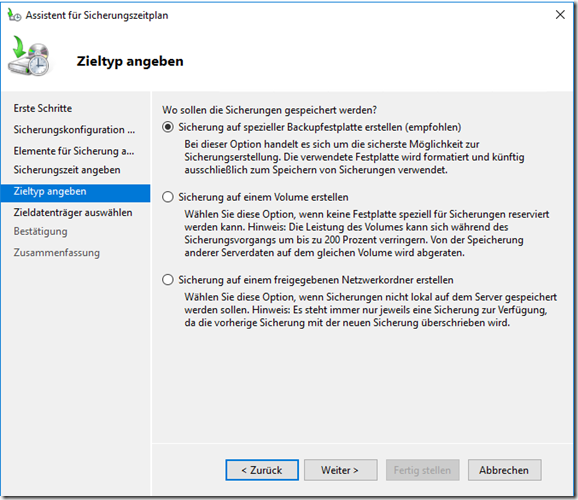
The dedicated drive for the backups can now be added in the next dialog:
The warning indicates that the drive will be reformatted and all data will be deleted. This is precisely why it should be a dedicated hard disk, otherwise the data will be lost:
After confirmation, the backup task is created:
In the Windows Server Backup console, you can now see when the next backup will be performed and how many copies/backups there are:
In this case, the backup will take place every day at 8 pm.
Check fuse
The backups should be checked regularly, unfortunately Windows Server Backup does not offer any notifications by default. This would also have to be remedied using a script.
The status of the backups is displayed in the console:
More information can be found in the event display, where you can also check whether the Exchange VSS Writer has been notified correctly:
The deletion of transaction logs can also be traced in the event history:
And also the successful completion of a backup:
If you want to create a corresponding script for the Windows Server backup, you should consider these events for notifications / status messages (or all ESE and MSExchangeRepl events in the backup time window).
Addendum
The recovery options will follow in the next posts.
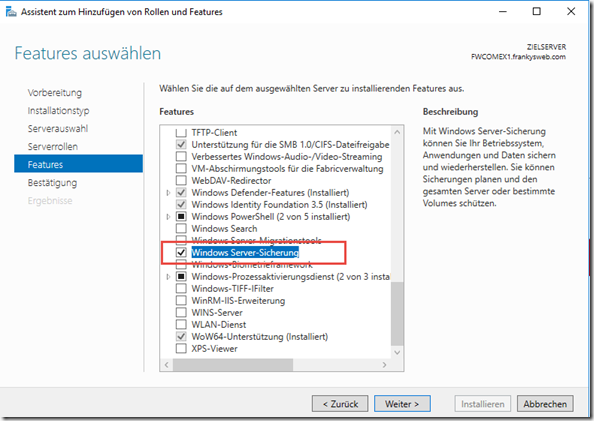
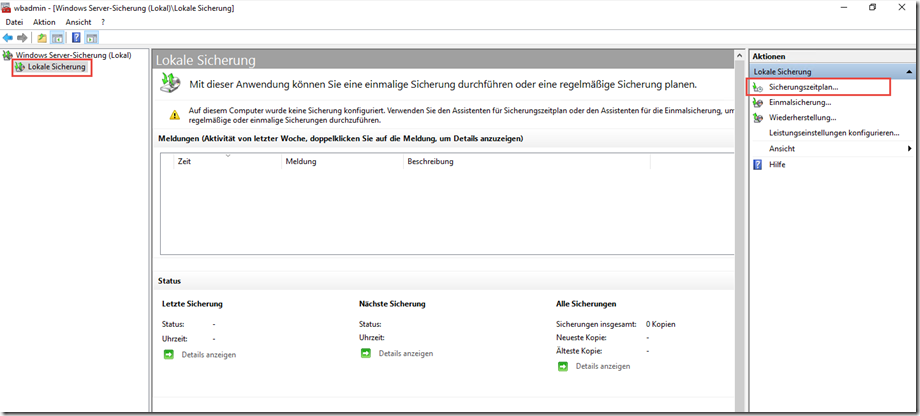
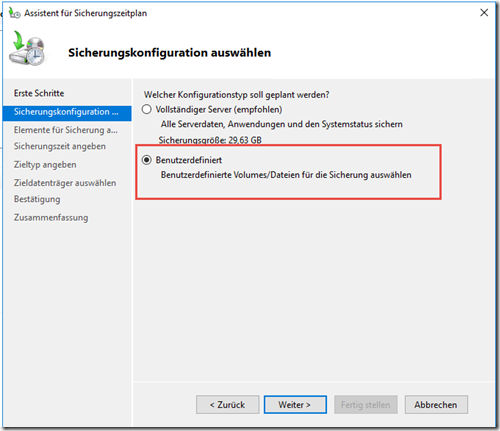
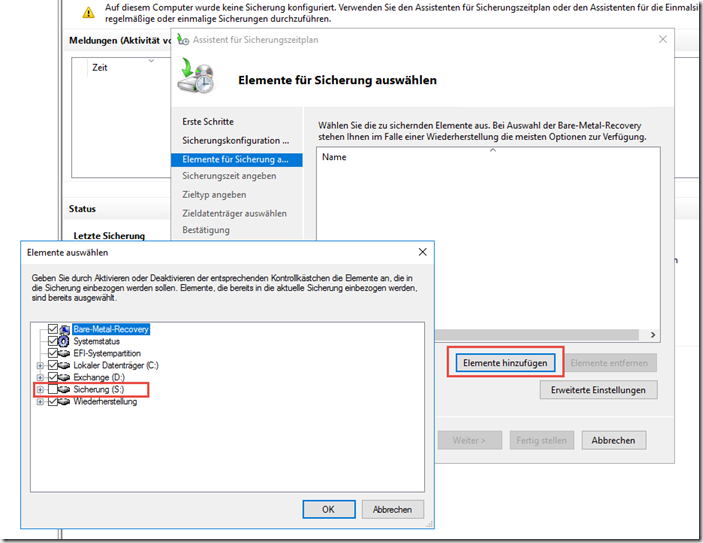
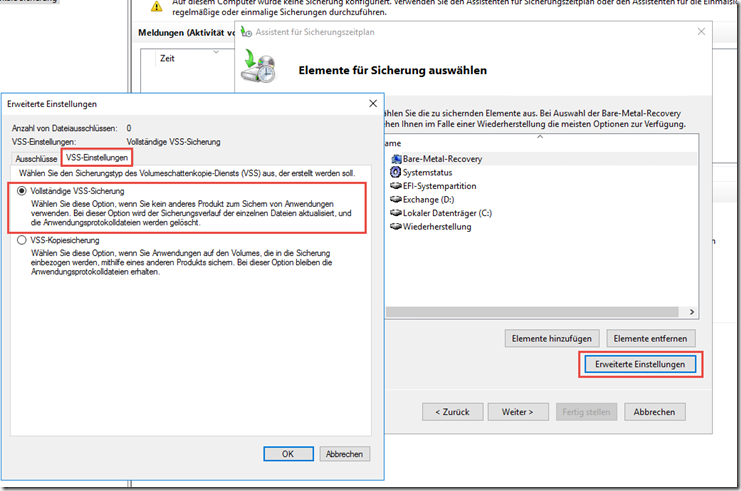
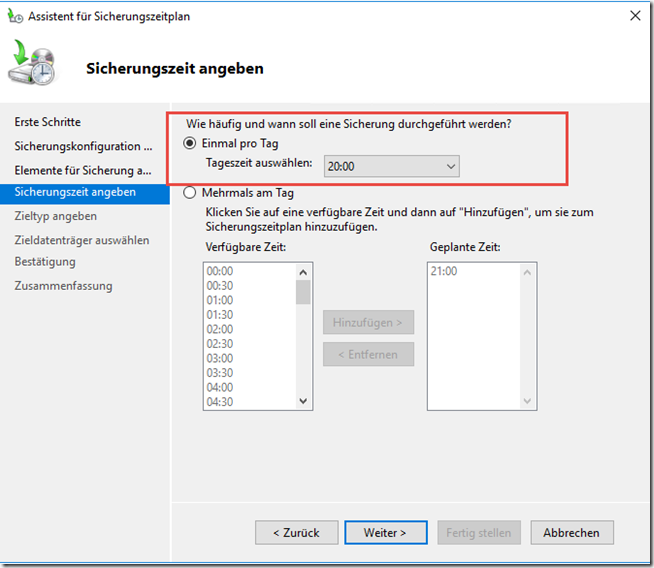
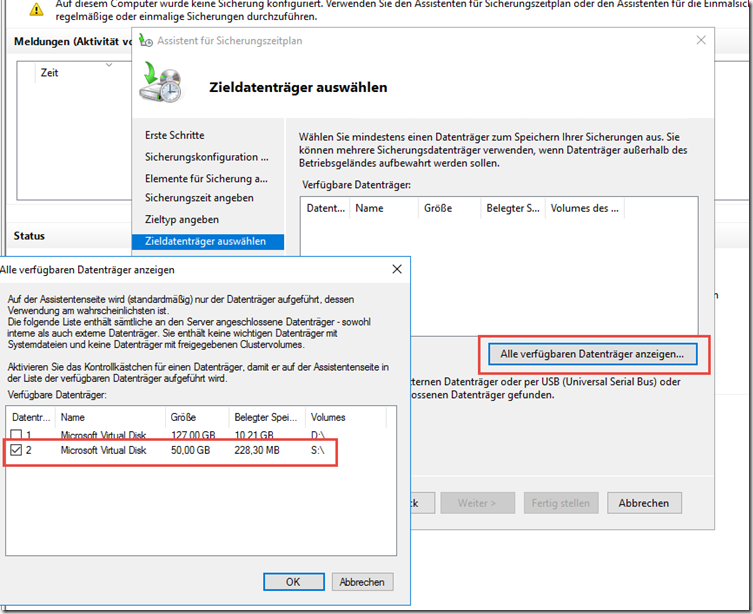
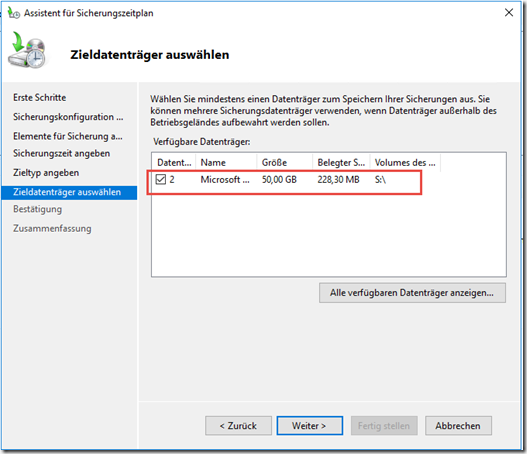
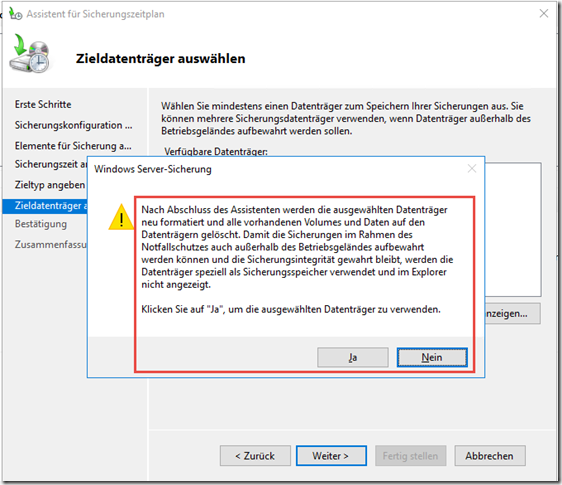
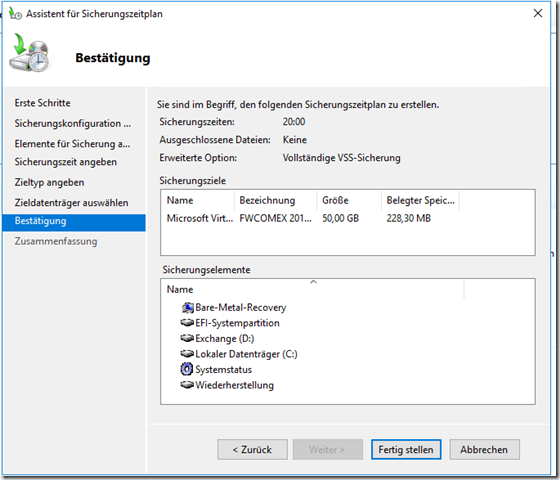
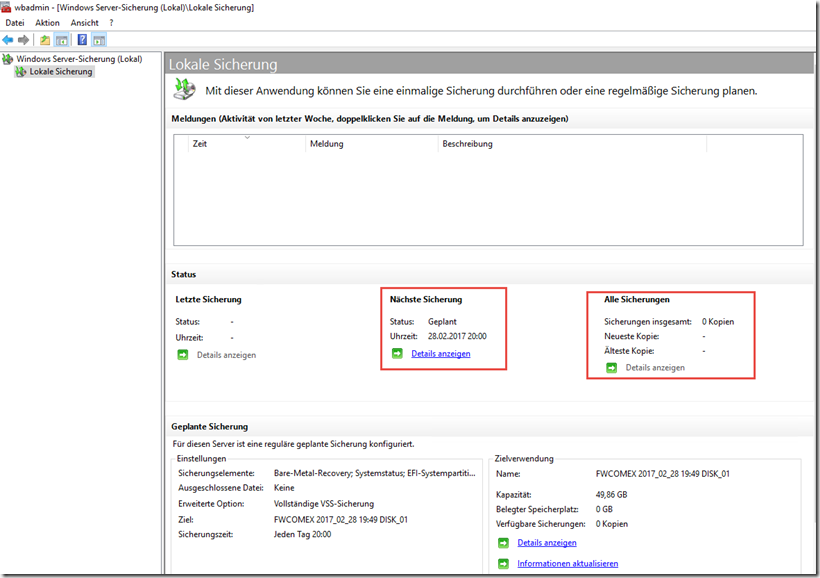
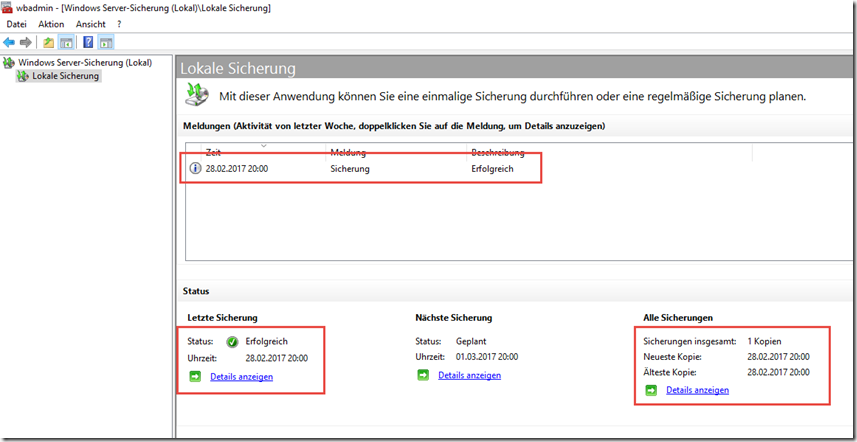
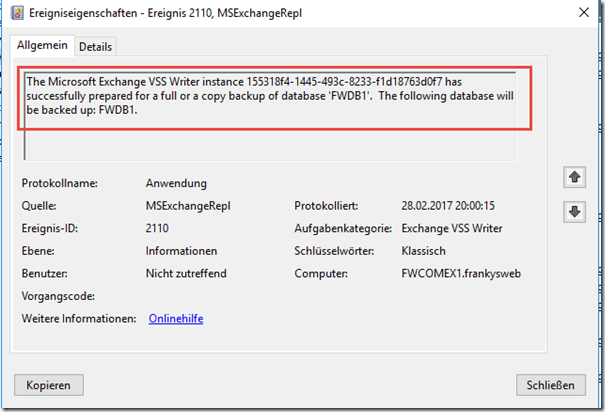
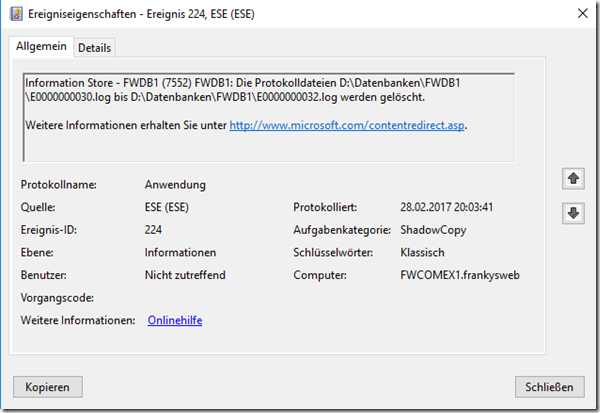
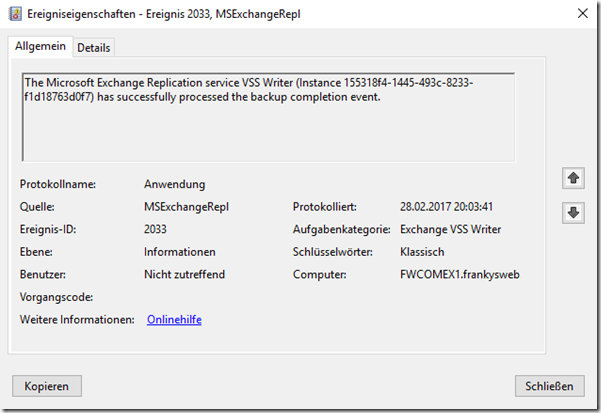
Danke, ich hab’s auch schon wieder abgedreht nachdem die Meldungen alle paar Minuten kamen.
Kann ich bestätigen, bei großen installationen kannste das Backup vergessen. Bei mir geht es soweit das der Server direkt abstützt (2500 Mailboxen)
Hallo Frank,
super, genau das was ich heute brauchte! Ich musste eine temporäre Sicherung für unsere 2016er DAG einrichten. Gehe ich richtig in der Annahme, dass ich bei einer DAG jeweils pro Server die aktiven Datenbanken in den Backupjob aufnehme? So habe ich es jedenfalls konfiguriert und den Job gleich mal als Einmalsicherung angeschmissen. Und siehe da, schon der erste Fehler wegen Performanceproblemen: „At ‚01.03.2017 07:15:29‘ the copy of database “ on this server appears to be experiencing performance issues, possibly as a result of storage failure. Consult the event log on the server for other storage and „ExchangeStoreDb“ events for more specific information about the failure. Recovery was not attempted.“
Kann das tatsächlich zu einem Problem führen? Wie gesagt, das ist nur temporär. Ich denke, dass das maximal eine Woche läuft.
Viele Grüße
Daniel
Hi Daniel,
ich würde immer die passiven Datenbanken sichern, auch die Windows Server-Sicherung unterstützt dies. Ich würde es in größeren Umgebungen aber nicht einsetzen wollen…
Gruß, Frank